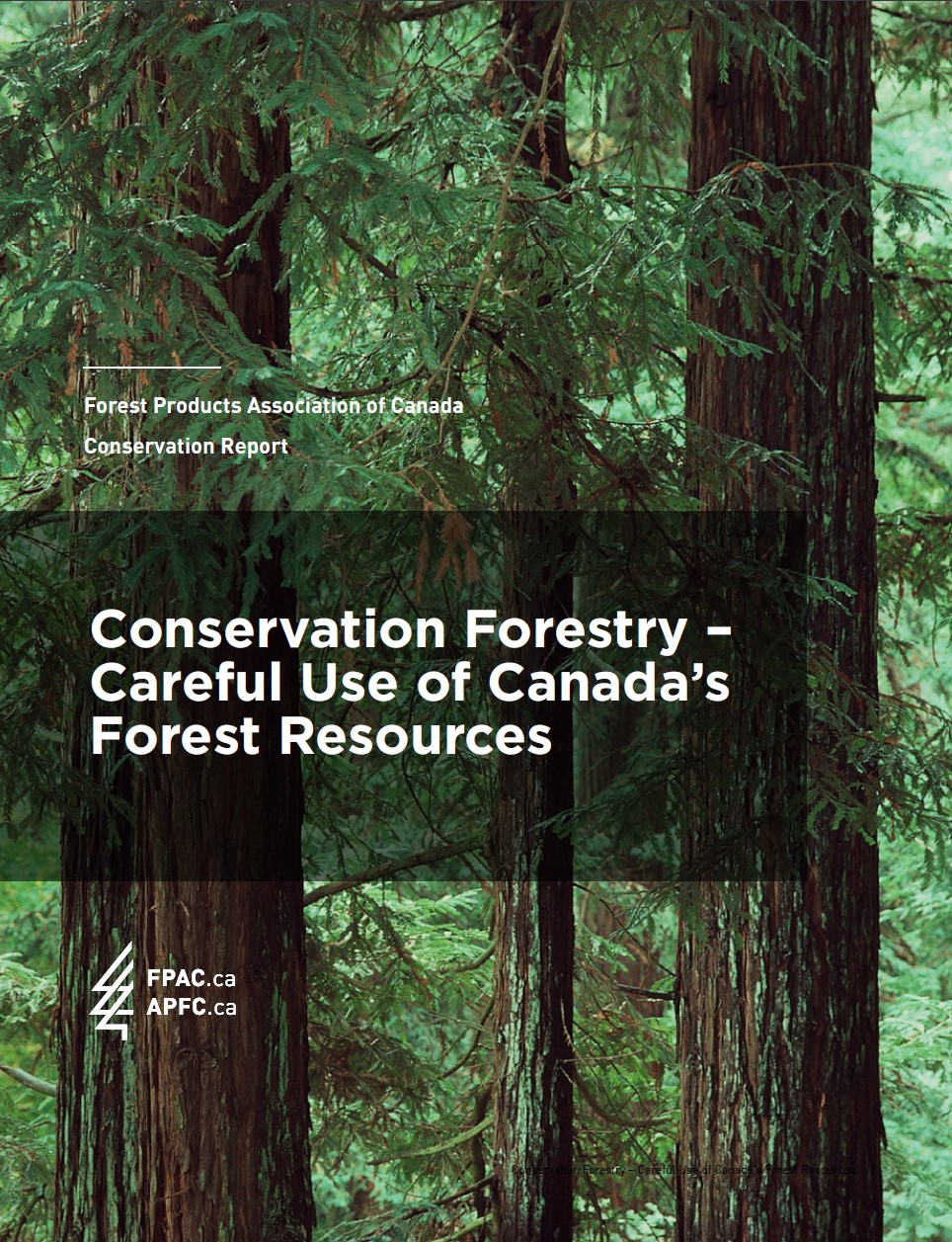Canada’s Forests are on the Front Lines of Climate Change
Climate change presents profound challenges to Canada's forests, threatening their carbon storage capacity and ecosystem health, alongside community health and wellbeing and economic stability. This provokes difficult questions regarding how to maintain economic prosperity and environmental health imperatives attached to working forests.
Climate-Smart Forestry (CSF) offers a comprehensive approach to climate change mitigation through forest management that restores resilience – the capacity to withstand and recover from adversity – into forest ecosystems, enhance the carbon sequestration capacities of forests, build a nature-positive economy, advance Indigenous reconciliation, and create safe communities. Canada is at a pivotal moment to embrace CSF as a cornerstone of climate action and sustainable development.
How the Federal Government Can Unlock Climate-Smart Forestry
To scale Climate-Smart Forestry across Canada, the federal government should:
1. Develop a national Climate-Smart Forestry framework that includes measurable objectives and Key Performance Indicators to demonstrate the government’s commitment to climate-smart resource development and build industry’s social license to operate. As part of the framework development process, the government should review federal and provincial polices at odds with CSF-based adaptation and wildland fire mitigation—particularly the National Adaptation Strategy and the Canadian Council of Forest Ministers (CCFM) Wildland Fire Strategy.
2. Enhance Indigenous-Led Climate-Smart Forestry Capacity by providing financial and logistical support to Indigenous communities to facilitate their leadership in the development and implementation of Climate-Smart strategic actions, and policy development and revision. Initiatives can be scaled using existing Indigenous clauses in the Wildfire Resilient Futures Initiative, the Fighting and Managing Wildfires in a Changing Climate Program, and the Clean Fuels Fund – Production Capacity.
3. Re-open and inject more funding into the Nature Smart Climate Solutions Fund and Indigenous Natural Resource Partnerships Program, which are critical for CSF design and implementation. Canada can look to the Finnish government’s CSF investment models understand how new CSF-specific funding programs could integrate into existing regulatory mechanisms.
4. Launch specialized education and training opportunities for Climate-Smart Forestry. Traditional Canadian forestry education and training programs lack a standardized curriculum on CSF, leaving graduates without the skills necessary to secure climate-ready green jobs. CSF-focused educational programs and targeted funding for companies looking to emulate European experiential learning opportunities are critical for building a future-ready green workforce.
5. Create a Forestry Climate Solutions program that stimulates local innovation and collaboration like the European CLIMO partnership or Agriculture and Agri-Food Canada’s Agricultural Climate Solutions Program. Doing so would build a network of regional collaborations led by foresters, scientists, and other sectoral stakeholders to develop and share management practices for carbon sequestration, climate change mitigation, biodiversity protection, and strengthening farmers’ bottom lines. Involving communities and diverse stakeholder groups can build social license, trust in forest sector companies, and attract young and new talent to work in forestry, ultimately supporting the sector longevity.
Context
While the regionally specific nature of CSF makes it difficult to precisely define, a “Climate-Smart Forestry lens” encompasses three main components, with societal values and priorities serving as an overarching guiding principle:
• Mitigation Potential: Unlocking the potential of forests and the forest sector to reduce carbon emissions by increasing the natural uptake and long-term storage of carbon by forests and wood products.
• Forest Resilience: Complementary to mitigation, forest ecosystem resilience is achieved by adapting forest conditions to the current or expected effects of climate change. Adaptive forest management can enhance forest health and resilience by reducing the forest’s susceptibility to natural disturbances.
• Product Substitution: Using forest-based products in place of carbon-intensive ones like concrete, steel, plastics and petrochemicals, as well as energy from waste biomass in place of fossil fuels.
On the ground, CSF translates to diverse activities that foster trust, collaboration, and innovation. A few Climate-Smart forest management activities include:
• Afforestation, or planting trees in previously unforested land to increase forest area.
• Forest thinning/harvesting to reduce resource competition, tree mortality, fire fuel loads, and susceptibility to drought, thereby improving tree growth and carbon sequestration potential.
• Using wood harvested to reduce fire fuel loads for low carbon biofuels.
• Sustainably increasing the production of wood fibre-based substitutes for non-renewable materials.
• Indigenous cultural burning and prescribed burning to reduce fuel loads.
• Planting diverse, fire-resistant tree species that are optimized for changing climates.
More examples of CSF practices can be found in FPAC and the Delphi Group’s recent joint report, Climate Change Mitigation in Canada’s Forest Products Sector: Roadmap Toward Net-Zero.
Benefits of Climate-Smart Forestry
CSF is one of the most effective ways for industry and government to cultivate “win-win-win” solutions – that is, actions that create significant ecological, social, and economic benefits simultaneously while building transparency and trust between industry, Indigenous communities, government, communities, and other key stakeholder groups. CSF can:
• Mitigate Carbon Emissions: FPAC estimates that through the rapid adoption of new technologies – including Biomass Carbon Capture Use and Storage (BECCS) and lime kiln decarbonization technologies – subsequent government investment into expanding such technologies, and related policy change necessary to scale CSF domestically, the Canadian forest sector could mitigate 18 to 46 million tonnes CO2 equivalent (Mt CO2e) annually by 2050, or 7 percent of domestic carbon emissions.
• Preserve Community Health and Wellbeing: The Food and Agriculture Organization of the United Nations (FAO) states that sustainable forest management is a mechanism to achieve other development objectives like hunger eradication, poverty alleviation, natural resource protection and rehabilitation, personal and community empowerment, Indigenous self-determination and more.
• Enhance Indigenous Reconciliation: Adopting a regional approach to forest management enhances the independence and adaptive capacity of forest-dependent communities, especially Indigenous communities. Indigenous-led CSF can help maintain traditional knowledge bases, promote the critical role of Indigenous-led forest management in federal policy, and support reconciliation across the forest sector. By working closely with Indigenous Peoples, forest sector companies support cultural revitalization and sustainable land management that builds forest resilience.
• Build Economic Resilience and a Future-Ready Workforce: In alignment with recent federal action to tackle labour shortages, CSF can help rebuild and retain a future-ready forest sector workforce that is highly skilled in Climate-Smart practices. If implemented at the scale necessary to mainstream CSF, this approach can drastically cut government recovery costs associated with extreme weather events, restoring affordability for everyday taxpayers and homebuyers.
Early Adopters of Climate-Smart Forestry
Canada can learn from international models of CSF implementation in Finland and Ireland that demonstrate the effectiveness of landscape-level planning, investment in renewable energy, and capacity building for Indigenous-led forestry. In Canada, the Sustainable Forestry Initiative's Climate-Smart Forestry Indicator, Indigenous-led CSF projects funded by the Forest Enhancement Society of British Columbia, among others showcase early adoption of and potential for scaling CSF nationally.








